Stem Cell Therapy in Dominican Republic
Search and Compare the Best Clinics and Doctors at the Lowest Prices for Stem Cell Therapy in Dominican Republic
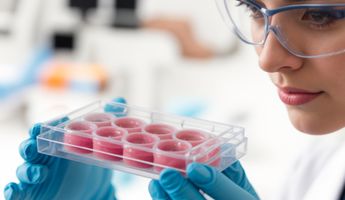
Find the best clinics for Stem Cell Therapy in Dominican Republic
No clinics available
Malaysia offers the best prices Worldwide
Price: $ 530

- Home
- Dominican Republic
Compare Before & After Photos of _procedure_photos.phpStem Cell Therapy
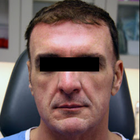
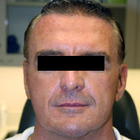
Front view
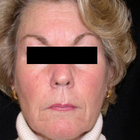
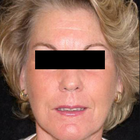
Front view
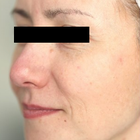
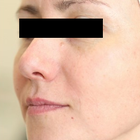
Half-side view
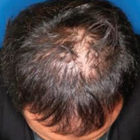
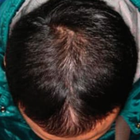
Front view
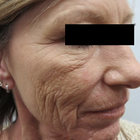
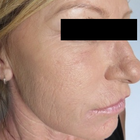
Half-side view
WHY US?
At Medijump, we're making medical easy. You can search, compare, discuss, and book your medical all in one place. We open the door to the best medical providers worldwide, saving you time and energy along the way, and it's all for FREE, no hidden fees, and no price markups guaranteed. So what are you waiting for?

Free

Best Price

Widest Selection

Risk-Free
What you need to know about Stem Cell Therapy in Dominican Republic
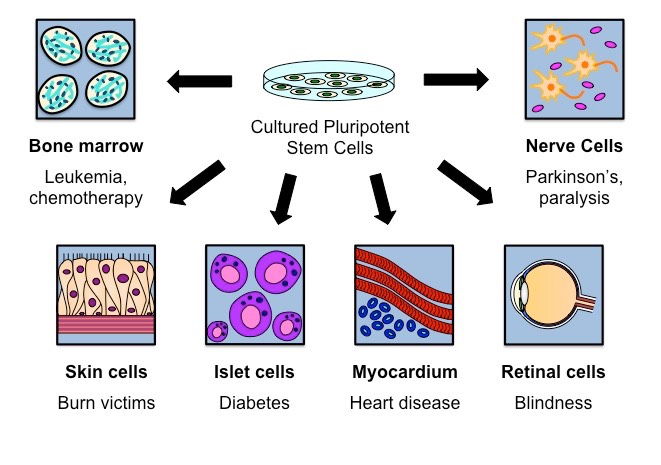
Stem Cell Therapy involves the use of stem cells to treat different diseases. These are non-differentiated cells of a multicellular organism. All the cells in the body are specialized for a specific function but they are the only cells without an assigned function. They can differentiate into any type of cell as and when required by the body and can proliferate rapidly to produce multiple copies of a specific type. Sources of stem cells are embryos and adult body tissues. In the adults, stem cells are present in bone marrow, brain, liver, skin, skeletal muscles, blood and blood vessels. While embryonic stem cells are derived from a blastocyst. Nowadays, the Umbilical cord is being stored under suitable conditions to get stem cells from it if needed. This is useful as chances of transplant rejection are less because stem cells are derived from your own umbilical cord.
Bone Marrow Transplant is the most commonly used method to treat various types of cancers such as lymphoma, multiple myeloma, and leukemia, etc. through stem cells. It is also used to treat brain diseases, cardiovascular diseases and cell deficiencies such as diabetes mellitus. Recently, anti-aging stem cell treatments have gain fame. It is used to restore your youth and beauty.
What is the cost of Stem Cell Therapy in Dominican Republic?
The price of stem cell therapy, also known as Stem Cell Therapy, can fluctuate greatly based on factors like the intricacy and specifics of the procedure, the particular health issue being addressed, and the geographic site of the therapy center or clinic. When compared to conventional therapies, stem cell therapy's cost tends to be rather steep.
Yet, when considering the prospective benefits and potential long-term economic advantages, an increasing number of patients are choosing this therapeutic approach. It's crucial to mention that, although certain health insurance firms may cover the expenses of stem cell therapy for specific situations, a number of them do not due to the considerate speculative aspect of the therapy.
What does a Stem Cell Therapy Procedure Involve?
The procedure of stem cell therapy starts with removing stem cells from your body or from the donor’s body. The cells are collected from different body parts depending upon the need. After collection, the cells are processed according to the purpose for which they are extracted. The processed stem cells are injected into the specific area of your body using ultrasound or X-ray guidance. Anesthetics are used and the procedure is done under sterile conditions. It is necessary to make sure that the cells are reaching the desired area so that the improvement is better and quicker. There are three types of stem cell transplant:
- Autologous transplant - your own body stem cells are removed and used. This type of transplant is safer and recovery is quicker because chances of transplant rejection are less as your own stem cells are being used.
- Allogenic transplant - stem cells are obtained from a suitable donor. Matching is done to find a donor whose white cell antigen closely resembles yours. The donor can or cannot be your relative.
- Syngeneic transplant - stem cells from your identical twin are used. In this case, the chances of rejection are low.
Each type of stem cell transplant involves different methods, procedures, and techniques with different side effects and risks. The one suitable for you depends upon your age, health, and physical conditions.
How Long Should I Stay in Dominican Republic for a Stem Cell Therapy Procedure?
The length of stay in the hospital varies in accordance with the condition for which stem cell therapy is being done. It is usually a 3 to 4 hours procedure (in-patient) in which stem cells are introduced into the body using syringes or catheters. Different factors are considered to decide the length of your stay in the hospital. These factors are:
- You are not suffering from a fever for the last 24 to 48 hours.
- You have a safe blood cell count.
- You are able to eat and drink.
- Your symptoms such as nausea, vomiting, and diarrhea are under control.
- You have someone with you to look after you.
Your stay in the hospital is longer for an allogeneic transplant as compared to an autologous transplant and you're free to leave Dominican Republic the very next day, although it's advised to stay at least a few days in case you have further questions for the medical staff. But of course, these can be asked over the phone/email or directed towards your local medical team back home.
What's the Recovery Time for Stem Cell Therapy Procedures in Dominican Republic?
Complete recovery time varies from 2 to 12 weeks when the patient begins to feel pain relief. However, you can return to your routine work a couple of days after going through the transplant. Recovery depends upon your physical condition before and after the transplant. Over a period of 6 to 12 months, further improvements are seen in the patients. During the process, antibiotics and other drugs are prescribed. These drugs prevent transplant rejection and graft-host diseases. Allogenic stem cell transplant takes longer to recover than an autologous transplant.
What sort of Aftercare is Required for Stem Cell Therapy Procedures in Dominican Republic?
It is advised to keep in contact with your doctor and to visit them on a regular basis. Apart from this, the following points should be considered:
- Minor pain will be present after going through the therapy - icepacks are effective in this regard. Pain might either be because of inflammation or muscle spasm. Inflammation is common due to your immune system activity. Anti-inflammatory medicines are avoided in the initial period because they can interfere with the healing process.
- Walking is good for your health. Rest is not always the best option for quick recovery. Blood flow and oxygen is needed by the treated area which is provided by light activity and movement.
- Ask your doctor about your nutritional requirements and eat healthy according to it.
- Do some joint stabilizing exercises to aid the healing process.
What's the Success Rate of Stem Cell Therapy Procedures in Dominican Republic?
Stem cell therapy's effectiveness, also known as Stem Cell Therapy, can change based on the illness, the age and health of the patient, and the type of therapy used. Although new, stem cell therapy has shown promise in areas like bone, brain, and heart health, it is not always successful due to various reasons, one being the transplant rejection. It is an excellent idea to talk about the possible good and bad outcomes with your doctor before making a choice.
Are there Alternatives to Stem Cell Therapy Procedures in Dominican Republic?
Exosomes are being used as an alternative to stem cell therapy. They are lipid bilayer surrounded vesicles secreted by live cells. They contain mRNA, proteins, chaperons, and various signaling molecules. They work as a natural carrier system for the transport of these substances. They function as a messenger within the body carrying information from one cell to the other. Stem cell therapy can be enhanced using exosomes. They help the body’s natural healing ability to increase the pace of recovery. Sometimes, stem cell therapy and exosomes are given together for better results.
What Should You Expect Before and After the Procedure
Before you proceed with the Stem Cell Therapy, it's typical to have a meeting with your medical professional to examine your unique situation, the potential advantages and drawbacks of the process, and your overall wellness. This discussion will help determine if stem cell therapy is suitable for you. Comprehensive diagnostic evaluations may be necessary to fully examine your health status. The medical professional will guide you through the procedure, describing how the treatment is carried out, what it involves, and what to anticipate. The significance of regular physical activity and keeping a balanced lifestyle before the procedure to boost the effectiveness of the treatment shouldn't be overlooked.
Following the completion of the Stem Cell Therapy, you might feel a slight discomfort, redness, or swelling at the injection site, which typically subsides within a few days. Keep in mind that the recovery process post-procedure may take several weeks or months, as the reinstated stem cells function to fix and reconstruct the damaged tissues. Therefore, a degree of patience may be necessary before noticing the advantages of the treatment. Regular follow-up appointments with your medical professional to monitor your body's reaction to the treatment, assess progress, and control any possible side effects, are necessary. Reinforcing healthy habits such as a balanced diet, frequent physical activity, sufficient sleep, and stress control are crucial components of the post-procedure care.
What are Potential Risks of Stem Cell Therapy?
As with any medical intervention, Stem Cell Therapy is not devoid of risk. However, given that the patients' own cells are generally used, the chance of rejection or allergy is quite low. Possible complications may encompass infection, hemorrhage, or an adverse response to the anesthesia utilized during the operation. Moreover, while stem cells possess the extraordinary capacity to transform into various cell types in the body, there is a possibility they could proliferate without control, leading to the formation of tumors. Nevertheless, such instances are incredibly infrequent and are chiefly linked with embryonic stem cells, rather than the adult stem cells usually employed in the majority of Stem Cell Therapy procedures.
What are the Long-Term Effects of Stem Cell Therapy?
The enduring impacts of stem cell treatment, a fairly recent medical specialty, continue to be probed by scientific research. Nevertheless, some scholarly investigations propose that such a treatment method could offer a sustainable easing of symptoms and potentially decelerate the advancement of particular ailments. The influence of this therapeutic approach differs significantly among individuals and is significantly dependent on factors such as a person's comprehensive health status, the kind and gravity of the disease under treatment, and the specific treatment regimen pursued.
Whilst the information presented here has been accurately sourced and verified by a medical professional for its accuracy, it is still advised to consult with your doctor before pursuing a medical treatment at one of the listed medical providers
No Time?
Tell us what you're looking for and we'll reachout to the top clinics all at once
Enquire Now

Popular Procedures in Dominican Republic
Prices Start From $273

Prices Start From $2,000

Prices Start From $126

Recommended Medical Centers in Dominican Republic for procedures similar to Stem Cell Therapy

- Interpreter services
- Translation service
- Religious facilities
- Medical records transfer
- Medical travel insurance
- Health insurance coordination
- TV in the room
- Safe in the room
- Phone in the room
- Private rooms for patients available

- Interpreter services
- Translation service
- Religious facilities
- Medical records transfer
- Medical travel insurance
- Health insurance coordination
- TV in the room
- Safe in the room
- Phone in the room
- Private rooms for patients available

- Interpreter services
- Translation service
- Religious facilities
- Medical records transfer
- Medical travel insurance
- Health insurance coordination
- TV in the room
- Safe in the room
- Phone in the room
- Private rooms for patients available

- Interpreter services
- Translation service
- Religious facilities
- Medical records transfer
- Medical travel insurance
- Health insurance coordination
- TV in the room
- Safe in the room
- Phone in the room
- Private rooms for patients available

- Interpreter services
- Translation service
- Religious facilities
- Medical records transfer
- Medical travel insurance
- Health insurance coordination
- TV in the room
- Safe in the room
- Phone in the room
- Private rooms for patients available

- Interpreter services
- Translation service
- Religious facilities
- Medical records transfer
- Medical travel insurance
- Health insurance coordination
- TV in the room
- Safe in the room
- Phone in the room
- Private rooms for patients available

- Interpreter services
- Translation service
- Religious facilities
- Medical records transfer
- Medical travel insurance
- Health insurance coordination
- TV in the room
- Safe in the room
- Phone in the room
- Private rooms for patients available

- Interpreter services
- Translation service
- Religious facilities
- Medical records transfer
- Medical travel insurance
- Health insurance coordination
- TV in the room
- Safe in the room
- Phone in the room
- Private rooms for patients available

- Interpreter services
- Translation service
- Religious facilities
- Medical records transfer
- Medical travel insurance
- Health insurance coordination
- TV in the room
- Safe in the room
- Phone in the room
- Private rooms for patients available

- Interpreter services
- Translation service
- Religious facilities
- Medical records transfer
- Medical travel insurance
- Health insurance coordination
- TV in the room
- Safe in the room
- Phone in the room
- Private rooms for patients available
Stem Cell Therapy in and around Dominican Republic
About the Dominican Republic
The Dominican Republic can be found on the island of Hispaniola and is a part of the island group, the Great Antilles. The nation has diverse natural environments and land features. Characterized by rugged mountains on one side and the other side consist of low lying valleys and coastal plains. It is the world’s leading producer of professional baseball players. It is also home to the highest mountain, Pico Duarte, and the largest lake, Lago Enriquillo in the Caribbean Region.
In recent times, the Dominican Republic has become popular with medical tourists. Tourists, particularly from the United States, visit the country for Plastic and Reconstructive surgeries, especially for Breast Augmentation procedure. About 25,000 to 30,000 patients visit the Dominican Republic yearly for various medical treatments. The most sought-after services are general, Plastic and cosmetic surgeries, dental procedures, weight-loss, oncology, and orthopedic treatments.
Most medical service providers are situated around the capital city Santa Domingo and Santiago. The medical establishments offer competitive healthcare services with highly-qualified and internationally-trained surgeons. The following clinics can be found in Santa Domingo: Dr. Rafael E. Estevez - Plastic, Reconstructive, and Aesthetic Surgeon, Dr. Gustavo Almanzar Plastic Surgery Clinic, Alba Reyes Skin, and Hair Transplant Institute and Dr. Ivan Strachan Bariatric Clinic.
Popular Parts of Dominican Republic
The Dominican Republic is an unmatched destination with amazing natural sceneries, intriguing history, and diverse culture. It offers ecotourism adventures in splendid national parks, mountain ranges, beaches, and rivers.
Top attractions of the Dominican Republic:
- Santa Domingo – The capital city is where Christopher Columbus first set foot in the Americas. It is home to century-old buildings, most of which function as restaurants, shops, quaint hotels, and museums. Zona Colonial is the historic central area of Santa Domingo. It is the oldest European settlement and a UNESCO World Heritage Site.
- Punta Cana –Is a premier resort destination, bordering the Caribbean Sea and the Atlantic Ocean. It offers about 20 miles of white sandy beaches. The Bavaro Beach area and Punta Cana together form the Coconut Coast, an area of luxurious resorts. It is famous for water activities such as zip-lining, kayaking, windsurfing, and sailing.
- Samara Province –Is a city overlooking the Samana Bay. Its unique feature is the breeding point for thousands of humpback whales during their mating season in winter.
- Parque Nacional Del Este – Meaning the ‘Eastern National Park’, is one of the largest marine parks in the Caribbean. It also has an offshore coral reef system. Divers can watch a multitude of marine life within its waters. It is also home to hundreds of different species of birds, tropical forests and beaches.
- Lago Enriquillo – The massive hypersaline lake lies 140 feet below the sea level. You will see a large population of American crocodiles as well as pink flamingos, and various other bird species and you will even find iguanas at the entrance of the lake.
- El Limon Waterfalls – Being the tallest falls of the country, it is perfect for hiking and horseback riding through the rugged and steep mountain trail. The hike gives you a stunning view of the Caribbean landscape. The crystal-clear natural pool at its foot is a perfect place to cool off and relax.
- Kite Beach, Cabarete –Is a unique beach, about 20 minutes on foot from the main Cabarete Beach. Kiteboarders fill the otherwise quiet beach in the afternoons when the wind picks up.
Jarabacoa, Sosua, La Romana, Las Aguilas, and Puerto Plata & Playa Dorada are several other popular tourist spots in the Dominican Republic.
Weather and Climate in the Dominican Republic
The Dominican Republic has a tropical weather climate, and constant temperature throughout the year, with average yearly temperature, is around 77°F.
The hottest and humid period is from May to October. The mild winter season is from December to March. The period between November and April are the moderate seasons.
Rainfall is seasonal. The eastern and southern coasts experience rains between April and October. The northern coast receives rains throughout the year due to the influence of the north-eastern trade winds. The southern region is prone to hurricanes, with most striking in the months of August and September.
Getting Around in the Dominican Republic
The Dominican Republic offers easy access to the rest of the world with a myriad of flight options from North America and Europe. The main ports of entry into the country by air are the international airports in Santa Domingo, Punta Cana, and Puerto Plata. Santiago and Samana airports are other points of entry.
There are many flights from major cities of Canada and the US. The most frequent flights are from New York, Miami, Toronto, and Montreal. JetBlue, the budget airlines, operates flights from North America to Santo Domingo, Santiago, and Puerto Plata.
The Dominican Republic has a well-developed inter-country transport infrastructure with a large network of roads. It has many types of public transportation for moving around within cities such as buses, the metro, carro publicos, guaguas, and the motoconchos.
Carro Publicos are small car-public taxis and have a specific route displayed on their roof. Guaguas are privately-owned minivans and pick up travelers from any point and drop them off close to their desired location. Motoconchos are private motorcycle taxis that have reasonable fares and are ideal for short journeys.
Tourist Visas in the Dominican Republic
Citizens of countries such as the UK, USA, and Canada, and Schengen countries are not required to have a tourist visa to enter the Dominican Republic, under a bilateral agreement between the countries. However, they do need to:
- Carry a tourist card (Tourist cards allow you to stay for 30 days and allow an extension to stay beyond 30 days).
- Have a valid passport not expiring before six months with at least one blank page
- Carry proof of onward and return journeys and sufficient funds.
Nationals of countries like India, Sri Lanka, China, and Russia need to get a tourist visa to travel to the Dominican Republic. The visas are multiple-entry type and are valid for 60 days.
Additional Information
- The Dominican Peso (RD$) is the official currency of the country. As of April 2019, one US Dollar is worth about 51 RD$. Major tourist areas like Punta Cana accept US Dollars.
- You can find many ATMs in Santa Domingo and other popular tourist cities. Dominican Republic banks are members of the Maestro, Citrus, and PLUS networks. Hence, you can use the affiliate credit and debit cards here.
- Spanish is the official and major language of the country. Dominican Spanish forms its dialect. Very few locals understand and speak English.
- 93% of the population follow Roman Catholicism. However, many Dominicans do not go to church on a regular basis.
- Major holidays of the Dominican Republic are religious. While others are non-religious and national holidays. Other than Christmas and Good Friday, the Day of Our Lady of Altagracia (January 21), Corpus Christi (June 17) and the Feast of Our Lady of Mercy (September 24) are the religious holidays. Juan Pablo Duarte (January 26), Independence Day (February 27), and Dominican Restoration Day (August 16) are the national holidays specific to the country.
Popular Searches
- Plastic Surgery in Thailand
- Dental Implants in Thailand
- Hair Transplant in Thailand
- Breast Augmentation Thailand
- Gastric Sleeve in Thailand
- Gender Reassignment Surgery in Thailand
- Laser Hair Removal in Bangkok
- Botox in Bangkok
- Dermatology in Bangkok
- Breast Augmentation in Bangkok
- Coolsculpting in Bangkok
- Veneers in Turkey
- Hair Transplant in Turkey
- Rhinoplasty in Turkey
- Stem Cell Therapy in Mexico
- Rhinoplasty in Mexico
- Liposuction in Mexico
- Coolsculpting in Tijuana
- Rhinoplasty in Korea
- Scar Removal in Korea
- Gastric Sleeve in Turkey
- Bone Marrow Transplant in India
- Invisalign in Malaysia
- Plastic Surgery in the Dominican Republic
- Tummy Tuck in the Dominican Republic
- Plastic and Cosmetic Surgery in Poland
- Rhinoplasty in Poland
- Hair Implant in Poland
- Dental Implants in Poland
- IVF in Turkey